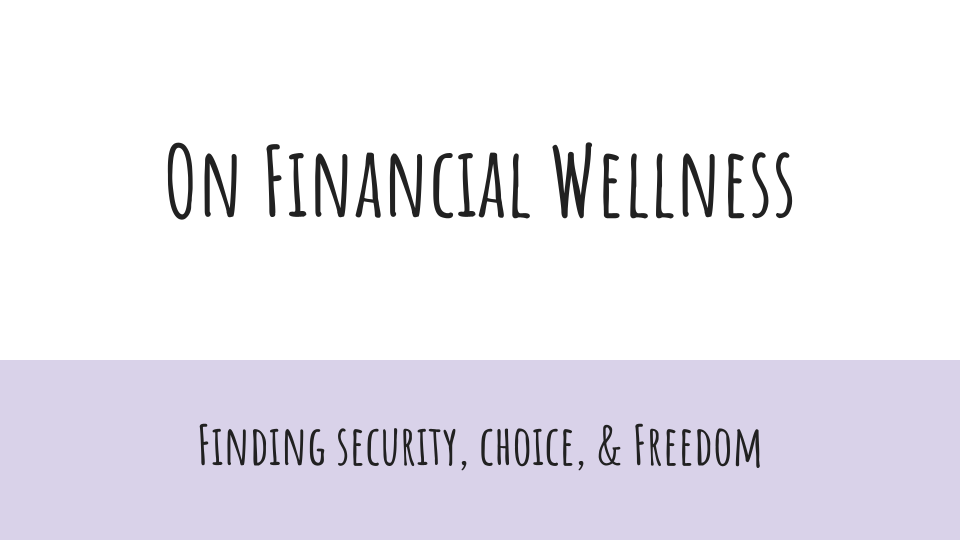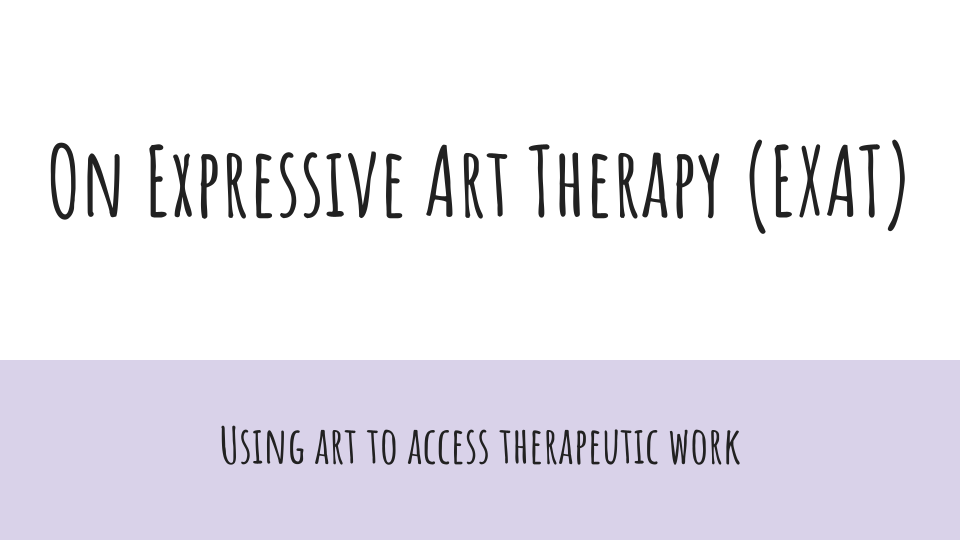On Occupational Wellness
Occupational Wellness is the alignment between your personal and professional values at your workplace. It is the feeling that your values system matches the values of your company. Oftentimes our occupation is a major source of stress and frustration where we feel stuck in a cycle of dissatisfaction. This chapter will explore ways to identify the match between you and your company’s values and evaluate the quality of your occupational health.
Below you will find resources related to Occupational Wellness.
More about Occupational Wellness
Occupational Wellness is experiencing an alignment between your personal and professional values at your workplace. It is the feeling that your values system matches the values of your company. Reasons for your feelings of dissatisfaction often be boiled down to the following criteria:
A mismatch between your personal values and your company’s values
Unhealthy workplace culture (i.e. - the Drama Triangle)
Unproductive patterns of communication
Personal dissatisfaction (i.e. - feelings of helplessness / lack of control)
#1: Mismatch in Values
To understand the alignment in values you must first know what your personal and professional values are. See the Values module for further exploration of your values. Once you’ve identified your values, turn your attention to your company. What do you think your company values? Have you ever experienced instances where your personal values have felt compromised by the decisions the company makes? If you find areas where these values are in conflict, come up with a plan for addressing this mismatch.
#2: Unhealthy Workplace Culture
A common symptom of the workplace is the Drama Triangle. Because you are in a high-stress environment where your livelihood & security (and maybe the security of your family too) are at stake, there is added pressure to perform, succeed, and advance. With competition and the ever-present stressors of the workplace, the Drama Triangle often emerges as an unhealthy way to relieve the stress of the system.
When considering the Drama Triangle for your company, be honest with where you are in the triangle - Victim, Rescuer, and Persecutor. Ask yourself what you can do to get out of the Drama Triangle for yourself (even if your company remains in the triangle!).
Additionally, think about other parts of the workplace culture that feel unhealthy. Ask yourself if any of these symptoms are in conflict with your values. For example, a workplace culture that glorifies long hours may be in conflict with your value of work-life balance.
#3: Unproductive Communication Styles
Not everyone was taught how to be an effective communicator! When at work consider how you are usually spoken to, and what effect that has on you. How do you normally respond? Is it challenging to communicate assertively at work? When you find yourself struggling with assertive communication, check in and see what emotions you are feeling and what ‘story’ you may be telling yourself about the outcome of this conversation.
Remember that you get to teach people how you want to be spoken to by role-modeling that communication with them!
#4: Personal Dissatisfaction
It is easier to think about what the company is doing wrong than it is to think about what you can do to change it. Often we feel powerless in our job or feel a lack of control over what could happen if we left. Sometimes our life circumstances dictate that we do need to stay in this role to provide enough stability to pass through a difficult life moment. However, often we fall into a ‘Victim’ mentality with our occupation, a ‘woe is me’ attitude that strengthens this negative self-talk. What can you do to feel more empowered in your role? What supports do you have at work? At home?
Remember that you grow in the direction where you put your energy. Do you want to grow towards the light, or towards the dark? What do you need to focus your attention on in order to orient more towards the light?
Occupational Wellness Suggested Activities
Take time this week to consider the following activities related to exploring Occupational Wellness. There are several different options for you to explore in case one modality works better for you. Please note that your Conversation Prompts can also make great Journal Topics.
Journal Topics
What are some ways that I am aligned with my company’s values? What happens to my thoughts, emotions, and actions when I feel values-aligned with my job and my company?
What are some ways that I am not aligned with my company’s values? What happens to my thoughts, emotions, and actions when my values feel out of alignment with my job and my company?
What is the connection between my emotional capacity cup and how I experience work? What are some ways that I could actively lower the level in my cup when I am at work?
What have I experienced within my workplace’s culture? What do I like about the culture? What do I dislike about it? What can I do to shift how I show up within this system?
How do I experience the Drama Triangle with my job? What roles do I play in different scenarios? How can I work to get ‘Above the Line?’
In what ways do I feel satisfied with my job?
In what ways do I feel dissatisfied? What is within my control to shift these feelings of dissatisfaction?
What am I proud of about my job?
In what ways does my job help meet my needs?
How is my job working towards my career goals? How is it hindering them?
In a perfect world, what would my job be? How would the company be structured?
How will I know when I feel satisfied with my job and workplace?
Conversation Prompts
With a partner, family member, or friend, discuss your job. Pay attention to your body’s cues as you discuss the pros and cons of your work.
Talk about your hopes for your career. Consider your fears. Do you find yourself making decisions based on hope, or fear, or both? How do your hopes and fears affect your occupational decision-making?
Experiential & Artistic Activities
Create a piece of artwork that represents your experience of your job. Take as much time as you need. Pay attention to how it feels creating this piece. Notice the colors that you are using and how they interact with each other. Then, journal or discuss the experience of this piece.
Create a ‘vision board’ of your values, goals, and career ambitions. Draw out how these values, goals, and ambitions align. Then, with a different color, draw out how they may get in each other’s ways.
Additional Resources on Occupational Wellness
Documents/Books on Occupational Wellness
Other Chapters in WELLNESS
Check out the Rest of the Classroom!
References
Buffington, B., Melnyk, B., Neale, S. (2019, October 11). Career wellness. American Nurse. Retrieved January 8, 2022, from https://www.myamericannurse.com/career-wellness/
Clark, D. J. (2020). Escaping the Drama Triangle: Strategies for Successful Research Administration from the Psychology of Codependence. Journal of Research Administration, 51(2), 84–101.
Eifert, G.H, & Forsyth, J.P. (2005). Acceptance and Commitment Therapy for Anxiety Disorders : A Practitioner’s Treatment Guide to Using Mindfulness, Acceptance, and Values-Based Behavior Change Strategies. New Harbinger Publications.
Emerald, D. (2019). 3 Vital Questions : Transforming Workplace Drama: Vol. First edition. Polaris Publishing.
Forrest, L. (2008). The Three Faces Of Victim – An Overview Of The Victim Triangle. lynneforrest.com. Retrieved January 8, 2022, from https://www.lynneforrest.com/articles/2008/06/the-faces-of-victim/
Mattke, S., Kapinos, K. A., Caloyeras, J. P., Taylor, E., Batorsky, B., Liu, H., Van Busum, K. R., & Newberry, S. J. (2014). Workplace wellness programs : services offered, participation, and incentives. Rand Corporation.
Putnam, L. (2015). Workplace wellness that works : 10 steps to infuse well-being and vitality into any organization. John Wiley & Sons, Inc.
















